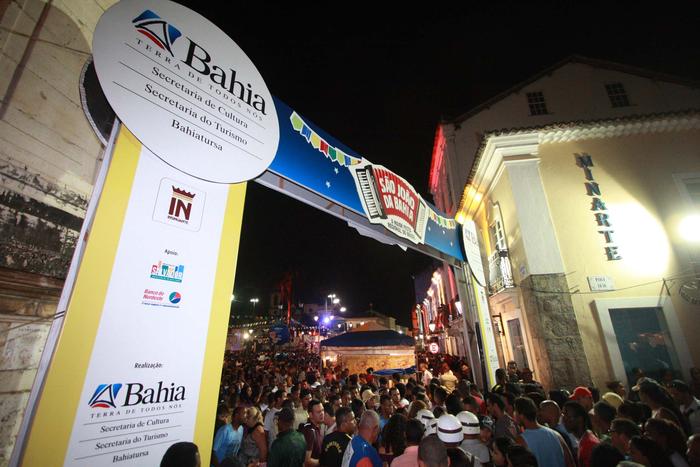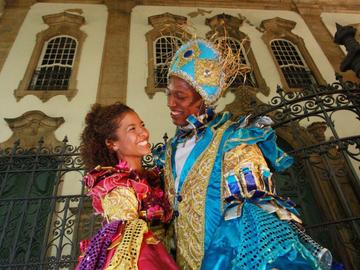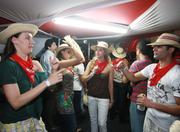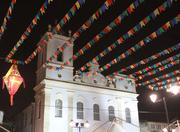Festa de São João Picture 2

More information on Pelourinho Saint John Annual Festival - Salvador Photo by: Fotos Gov/Ba
Pelourinho Saint John Annual Festival - Salvador
Bahia is known as the land of carnival. But the state also has another big party, which moves all of its 417 cities: St. John the thousands of tourists from all parts of Brazil enjoy the June Festival in Bahia.
The attractions range from regional groups to national attractions such as Leonardo, Alceu Valenca, Cats Are Aliens and Black Eyed Peas, among others. Apart from the various demonstrations such as gang, games and foods. The St. John of Bahia is the largest regional festival in Brazil.
The festival is a tribute to St. John the Baptist, cousin of Jesus Christ, born on June 24. He was considered a saint hard, stern, reserved and sometimes very severe. His birth coincides with the summer solstice (winter in South America) when people celebrated the closeness of the field crops and to ward off the demons of the sterility of cereal pests and drought, sacrifices were lighting fires.
Despite the tradition of the feast of St. John to be stronger in the inner cities, the June festivities never ceased to take place in Salvador. Salvador, and especially those from poor neighborhoods, meet with family, friends and neighbors at parties watered the typical food and drinks, not forgetting the fire, reminiscent of the birth of John the Baptist.
But three years ago it was the only family celebration has become one of the tourism products of Bahia, with the inclusion also of Salvador in the script of the greatest celebration of St. John of the state. The festival, always held on the Historic Center, has attracted tourists from all over the world, linking the pleasure of being the first capital of Brazil to the knowledge of northeastern culture during one of the most celebrated festivals of the region.
This year, St. John of the project happens Bahia 17-25 June in Pelourinho, with a stage mounted on Terreiro of Jesus and three squares. In addition to weight and attractions of local groups that still to be confirmed, the festival features performances and competitions gangs, with participants of all ages. The typical dishes of the day are not left out of the festivities, but join the flavors present in the Historic Center throughout the year such as the appetizing acarajé and famous clove (based drink made of rum, cloves and other herbs and aged in barrels wood, to offer a more refined taste). All this in one of the main sights of the city, the stage of history and culture of Bahia.
All Europe has this tradition that, according to popular belief, is due to a pact between Our Lady and St. Elizabeth, mother of John the Baptist. Of those who had their first child to light a fire door. Part, though, this tradition dances around the fire and jump over the flames, all the joys of living and abundant foreshadowing of months.
Unlike other religious festivals like Christmas, for example, where typical dishes are mostly imported from European countries (nuts, citrus fruits, etc..), St. John's cuisine is essentially Brazilian.
Today, in cities that celebrate St. John, still maintains the tradition of gangs (corridinho of Portuguese influence, a typical dance whose steps resemble the gang), fires (which are not only privilege but of Junin and all and any expression of joy of the people) and clothing bonfire. Moreover, they preserve also the games like blind man's buff, the break-pot and stick-to-fat, all with large participation of the kids.
http://www.saojoaobahia.com.br/a-festa/historia/
More Photos of Festa de São João Picture 2























